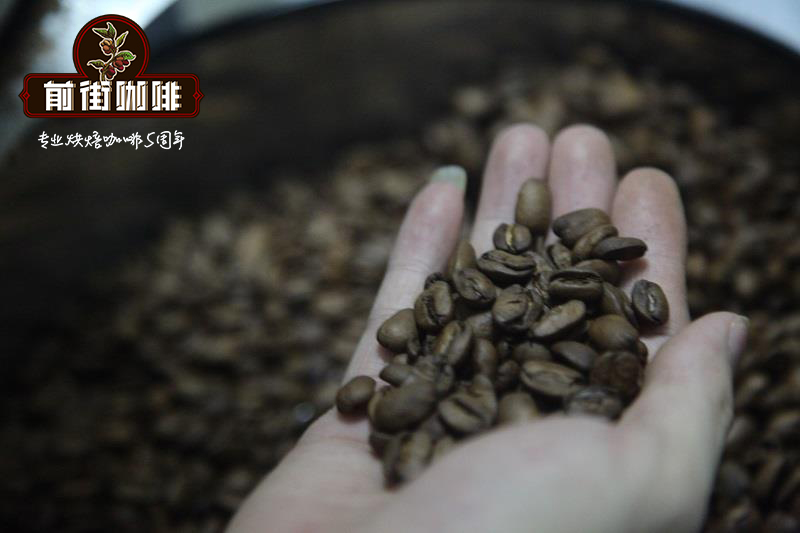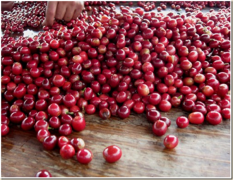Coffee beans need to be roasted.
Coffee beans are the seeds of coffee cherries that grow on coffee trees. Normally, there are two coffee beans in each coffee cherry. When the untreated raw coffee beans are directly soaked in hot water, there is almost no coffee flavor and aroma.
Coffee beans undergo numerous chemical changes in the roasting process and break down thousands of compounds. Coffee roasters hope that when roasted coffee is soaked in hot water, it will have a very good flavor.
Roasting causes coffee beans to change as follows:
● color changes from green to yellow, from yellow to brown, from brown to brown, and from brown to black.
The volume of ● has about tripled.
● density halved
● sweetness will grow out of nothing with the caramelization reaction in the baking process, and then from strong to weak, until it loses its sweetness at last.
Increased acidity of ●
● produces more than 800 aromatic substances.
● coffee beans will burst obviously when they release a large amount of water vapor and high pressure gas.
The purpose of roasting is to optimize the flavor of soluble substances in roasted coffee beans, which will affect the taste of coffee after brewing. Volatile aromas and oils are the main sources of aroma, while oils and ground bean fiber compounds create the Body of coffee. Baking is the beginning of this process. 80% of the taste of coffee is determined by baking. It can be seen that roasting in coffee production is because roasting gives off aroma of coffee and makes different kinds of coffee give out different flavors. Without this process, the unique taste of coffee will be greatly reduced. Roasting causes coffee to produce coffee oil, which gives coffee beans a strong aroma. The most outstanding feature of this fragrance is that it is volatile and soluble in water. Therefore, people can not only ask about the mellow smell of coffee beans, but also pour it into the cup and taste it carefully.
Baking, as the name implies, is to provide heat to coffee beans, causing a series of chemical changes inside. First of all, the starch in raw beans will be converted into sugars and acids because of high temperature, while substances such as cellulose will be carbonized differently. Water and carbon dioxide evaporate, while proteins are converted into enzymes, which combine with the rest of the fat to form an oil film on the surface of coffee beans. Coffee beans swell when roasted, a bit like popcorn, and interestingly, coffee crackles during roasting, just like we use microwave popcorn. But because the skin on the surface of coffee beans is very tough, we usually don't see coffee beans crack like popcorn. Coffee roasting is divided into the following degrees:
1. Very shallow baked Light Roast
In the mildest baking method, the beans are yellowish brown and the aroma and concentration are mild and light, which can be used as a standard for identification in the early stages of baking.
2. Shallow baking / cinnamon baking Cinnamon Roast
As the name suggests, the beans are cinnamon-colored, slightly thicker than very light roasted, and refreshing in taste.

3. Medium baked Medium Roast
The beans are chestnut, sour and bitter have been released, its taste is deeper than light roasting, fresh aroma, mild taste, suitable for brewing American coffee.
4. Medium and deep baked High Roast
The beans are tea-brown and give people a slightly stronger impression than medium-baked beans. The aroma and color are balanced, and the bitter taste is stronger than the sour taste.
5. Deep baking / city baking City Roast
The beans are tea-brown, with a balance between sour and bitter taste, mellow and quite baked.
VI. Very Deep Baking / Deep City Baking Full City Roast
The beans are dark brown, sour and bitter. Because of bitterness, it is suitable for iced coffee.
7. French baking French Roast
Beans are dark brown, because deep roasting, beans contain fat floating to the surface, appears to be bright, bitter, roasted flavor is very strong, suitable for coffee Oulei.
8. Italian baking Italian Roast
The beans are nearly black, bitter and full-bodied, making them suitable for brewing espresso and cappuccinos.
Important Notice :
前街咖啡 FrontStreet Coffee has moved to new addredd:
FrontStreet Coffee Address: 315,Donghua East Road,GuangZhou
Tel:020 38364473
- Prev

13 varieties of Starbucks Coffee beans which kind of good taste is recommended to distinguish Starbucks from American Coffee beans
Professional coffee knowledge exchange more coffee beans information please follow the beans bought by the coffee workshop (Wechat official account cafe_style) in Starbucks a few times ago, to share with you. If it is not a professional, it is purely shared, and the opinions are also very subjective. 1.2.3Aribia from right to left
- Next

The taste of Elephant Bean Coffee is somewhat similar to that of the Jamaican Blue Mountains, which is known as the Cuban Blue Mountains.
Professional coffee knowledge exchange more coffee bean information please follow the coffee workshop (Wechat official account cafe_style) oversized elephant bean cherry coffee is three times the size of the average Arabica bean, is the world's largest coffee bean Oh coffee flavor spectrum: strawberry, berry pulp sweet, nutty, soft and full aroma, nutty finish, slightly sweet and sour, with a smooth taste, the overall balance is good like
Related
- Beginners will see the "Coffee pull flower" guide!
- What is the difference between ice blog purified milk and ordinary milk coffee?
- Why is the Philippines the largest producer of crops in Liberia?
- For coffee extraction, should the fine powder be retained?
- How does extracted espresso fill pressed powder? How much strength does it take to press the powder?
- How to make jasmine cold extract coffee? Is the jasmine + latte good?
- Will this little toy really make the coffee taste better? How does Lily Drip affect coffee extraction?
- Will the action of slapping the filter cup also affect coffee extraction?
- What's the difference between powder-to-water ratio and powder-to-liquid ratio?
- What is the Ethiopian local species? What does it have to do with Heirloom native species?

